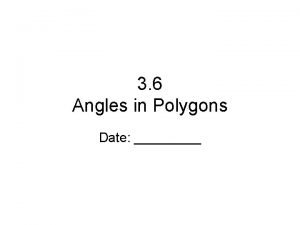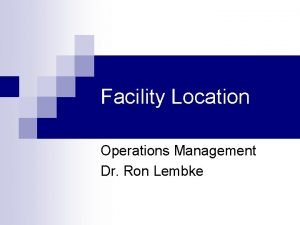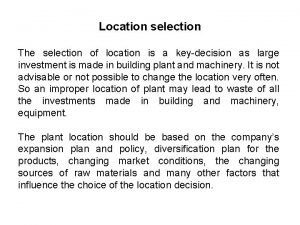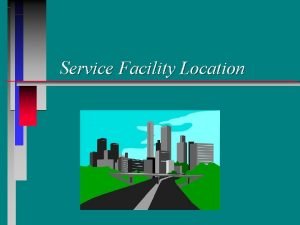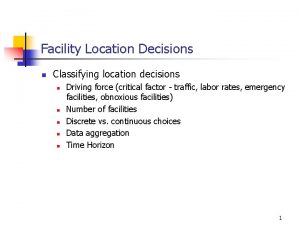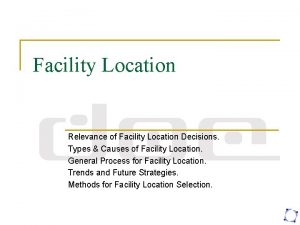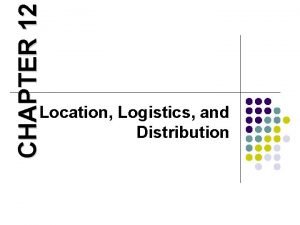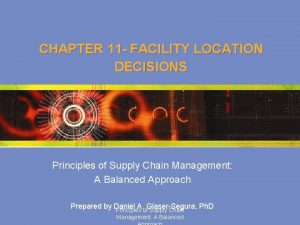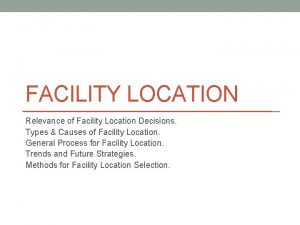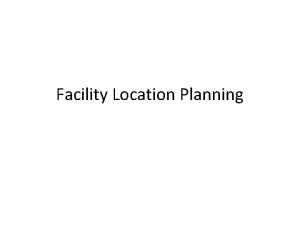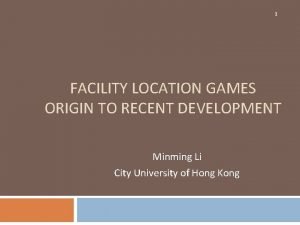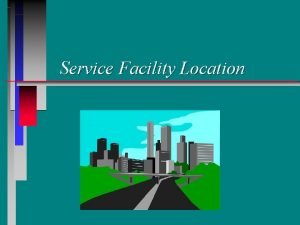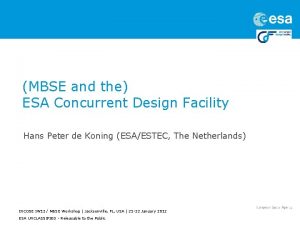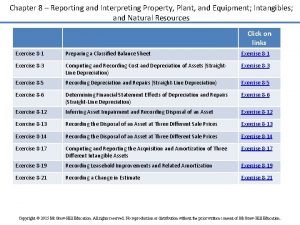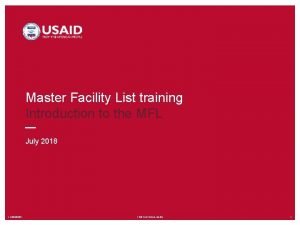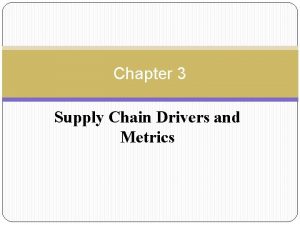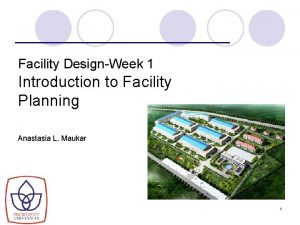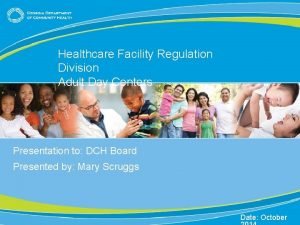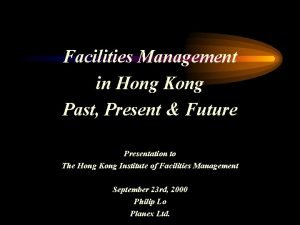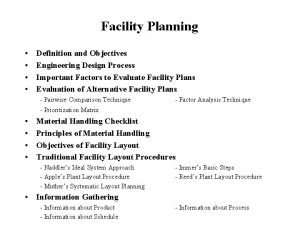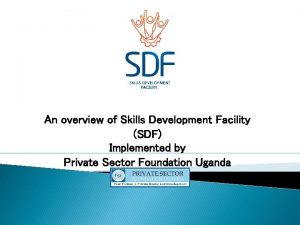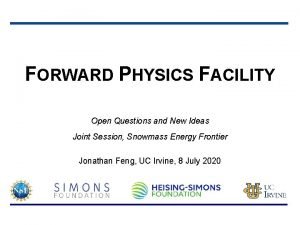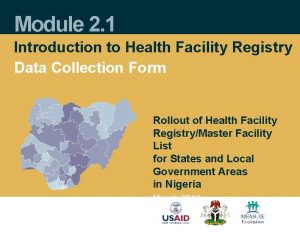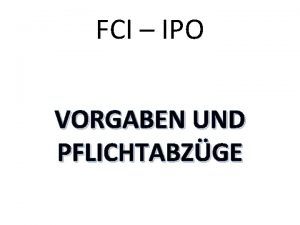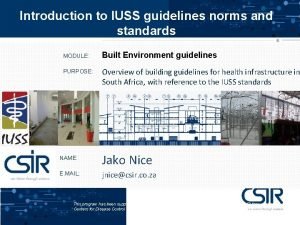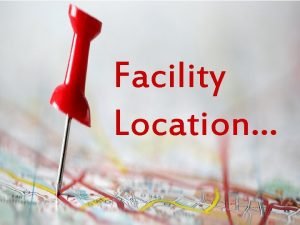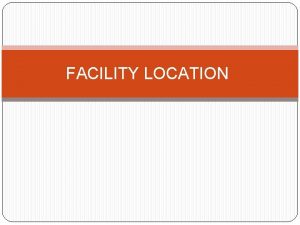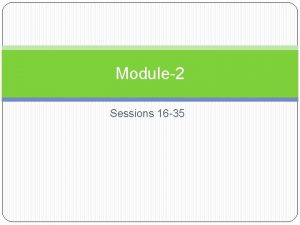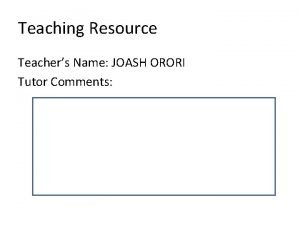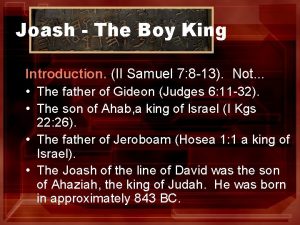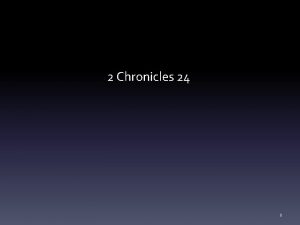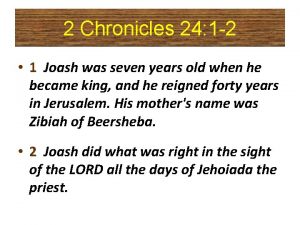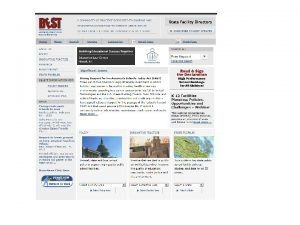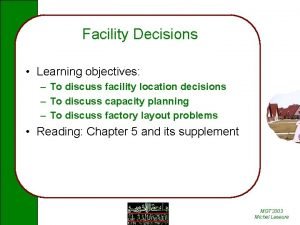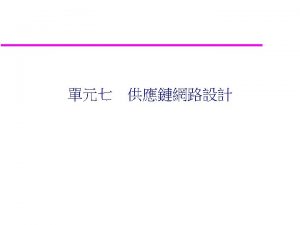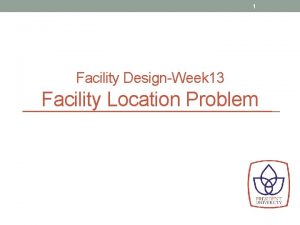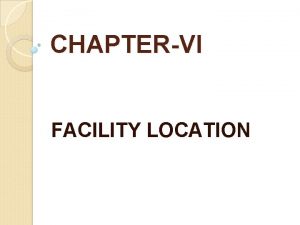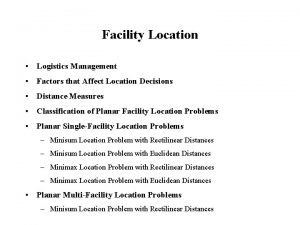Facility Location JOASH MAGETO Facility Location is a































- Slides: 31

Facility Location JOASH MAGETO

Facility Location is a Strategic Decision One time decisions Difficult to reverse It affects fixed, variable and distribution costs Affect sales

Your plant / facility may be …. • Near the Raw Material sources (Steel, Cement Plants ) • Near to Market / Customers (FMCG, Perishables Goods, Services) • Best facilities & infrastructure (MIDC, Union Territories, SEZs)


Country Factors 1. Political risks, government rules, attitudes, incentives 2. Cultural and economic issues 3. Location of markets 4. Labor availability, attitudes, productivity, costs 5. Availability of supplies, communications, energy 6. Exchange rates and currency risks

Country Factors

Region / Community Factors 1. Corporate desires 2. Attractiveness of region MN 3. Labor availability, costs, attitudes towards unions WI MI IL IN 4. Costs and availability of utilities OH 5. Environmental regulations 6. Government incentives and fiscal policies 7. Proximity to raw materials and customers 8. Land/construction costs

Site Factors 1. Site size and cost 2. Air, rail, highway, and waterway systems 3. Zoning restrictions 4. Nearness of services/ supplies needed 5. Environmental impact issues

Approach to Location Profit maximization (Service industry) Cost minimization (Manufacturing)

Approach to Location Service/Retail Location Revenue Focus Volume/revenue Drawing area; purchasing power Competition; advertising/pricing Physical quality Parking, Access; Security, Lighting; Appearance, Image Cost determinants Rent, Management caliber Operations policies (hours, wage rates) Goods Mfg. Location Cost Focus Tangible costs Transportation cost of raw material Shipment cost of finished goods Energy and utility cost; labor; Raw material; taxes, and so on Intangible and future costs Attitude toward union Quality of life Education expenditures by state Quality of state and local government

Approach to Location Service/Retail/Prof. Locn. Techniques Goods-mfg. Location Techniques Regression models to determine importance of various factors Factor-rating method Traffic counts Demographic analysis of drawing area Purchasing power analysis of area Transportation methods Center-of-gravity method Geographic information systems Factor-rating method Locational break-even analysis Crossover charts

Hotel Location ( Case : To open Chain of Hotels across the country ) Location is a strategically important decision in the hospitality industry Finally, the model considered only four variables - Property Prices of the inn - Median income levels - State population per inn - Location of nearby businesses / industries/ colleges

Telemarketing Location Require neither face-to-face contact nor movement of materials Have very broad location options Traditional variables are no longer relevant Cost and availability of labor may drive location decisions

Clustering Industry Locations Reason for clustering Wine makers South Africa; Natural resources of land climate supermarket firms Silcon valley, Boston, Bangalore (India) Talent resources of bright graduates in sc. /tech. areas, venture capitalists nearby Electronic firms Northern Mexico Duty free export zones Computer hardware manufacturers Singapore, Taiwan High tech penetration rate and per capita GDP, Skilled/educated workforce with large pool of engineers

Clustering Industry Locations Textiles Surat, Ludhiana, Tirupur Automobile repairs & Ancillaries Kirinyaga road, industrial area Reason for clustering Nearness to spare parts

Methods for Location 1. 2. 3. 4. 5. 6. Factor Rating Transportation model Centroid Method Load Distance Break-even Analysis Qualitative Factor Analysis

Factor rating method Factors Factor Rating (1 to 5) Location Rating (1 to 10) Location A Location B Rating Product Location A B 1) Proximity to Mkts 4 3 8 12 32 2) Tax advantage 5 6 7 30 35 3) Availability of power 3 7 8 21 2 4) Water availability 4 9 7 36 28 5) Community attitude 2 6 3 12 6 6) Infrastructure Development 2 6 5 12 10 7) Support industry 1 5 3 128 138 Location B is Preferred to A

CENTRE OF GRAVITY • The center of gravity method is used to determine the location of a single distribution center that will minimize distribution costs. It treats distribution cost as a linear function of the distance and the quantity shipped, which is assumed to be fixed, although an acceptable variation is that quantities are allowed to change as long as their relative amounts remain the same. • It is helpful in a limited number of situations – primarily service entities – where geography and transportation costs are important; as opposed to the critical factor method, which is more qualitative and general. • The method includes the use of a map that shows the locations of destinations. The map must be accurate and drawn to scale. A coordinate system is then overlaid on the map to determine relative locations. Once done, coordinates for each destination can then be placed. • If the quantities to be shipped to every location are equal, the solution is straightforward, as you can simply average the x and y coordinates. When they are not (as is usually the case), a weighted average must be applied, with the weights being the quantities to be shipped. The center of mass of a system of particles is defined as the average of their positions weighted by their masses: • As an example, consider six locations that require a central warehouse; each are plotted on a map with the following x and y values, followed by their importance (weights):

Centre of Gravity Method – Problem Retail Outlets Expected Demand A B C D E F G Total Demand 80 100 120 130 100 150 90 770 Q. : Where should we set up a centralized warehousing facility?

Centre of Gravity Method 16 • B 14 • G 12 Y-Distance (KM) 10 • A 8 6 • Center-of-gravity • E • C • F 4 • D 2 0 4 8 X- Distance (KM) 12 16 20

Centre of Gravity Method Retail Xi Yi Volume Outlet Dist (Vi) QTY Vi Xi Vi Yi A 4 10 80 320 800 B 3. 5 15 100 350 1500 C 4 6 120 480 720 D 10 2 1300 260 E 16 6 100 1600 F 8 5 150 1200 750 G 14 13 90 1260 1170 ∑ Vi = 770 ∑ Vi Xi = 6510 Xc=6510/770 = 8. 45 ∑ Vi Yi = 8500 Yc = 5800 /770 = 7. 53

Load Distance method Used to minimise the load distance product for pre selected locations Matrix Manufacturing is considering where to locate its warehouse in order to service its four Ohio stores located in Cleveland, Cincinnati, Columbus, Dayton. Two sites are being considered; Mansfield and Springfield, Ohio. Use the load-distance model to make the decision.

Load Distance method

Break Even method Cost-volume analysis method used for industrial locations 3 Steps in the method – 1. Determine fixed and variable costs for each location 2. Plot the cost for each location 3. Select location with lowest total cost for expected production volume

Cost-Volume-Profit (or Br. Even Analysis) Revenue TCA Cost FCA Vo Volume of Sales

Break Even Analysis Method • Location A : Annual fixed costs of sh 0. 3 m, Variable Costs - sh. 63 / unit, Revenues sh. 68 per unit. • Location B : Annual fixed costs sh. 0. 8 m, Variable costs sh. 32 per unit, Revenues are sh. 68 per unit. Exp. Sales volume 25000 units per year. Which location is more attractive?

Answer -Break Even Analysis Method • B E Volume = Fixed cost / (Contribution / unit) • VBE (A) = sh 300000 / 68 -63 = 60, 000 units • VBE (B) = sh 800000 / 68 -32 = 22, 222 units • At the expected demand of 25000 units, A B Revenue 1, 700, 000 Variable Cost Fixed Cost Total Cost Profit (Loss) 1, 575, 000 300, 000 1, 875, 000 (175, 000) 800, 000 1, 600, 000 100, 000 Location B is more attractive, even if annual fixed cost is higher

Transportation method Finds amount to be shipped from several points of supply to several points of demand Solution will minimize total production and shipping costs A special class of linear programming problems

Transportation method

Analytical Delphi Method (for complex multi-location decisions) 1. Coordinating Team (comprising Co-Employees & External. Consultants ) uses questionnaire to illicit information from Forecasting Panel. 2. Forecasting Panel - to identify Future Trends in environment, threats, opportunities. Process is repeated several times till consensus is reached. 3. This information is given to Strategic Panel to identify Long Term Strategic Goals & Objectives. 4. Various ALTERNATIVES are developed. 5. These alternatives are then prioritized

Thank You
 Joash tapiheru
Joash tapiheru Facility location
Facility location Center of gravity method facility location example
Center of gravity method facility location example Selection of location
Selection of location Cross-median approach
Cross-median approach Location decisions
Location decisions Objectives of good plant layout
Objectives of good plant layout Layout lokasi produksi
Layout lokasi produksi Centroid method of facility location
Centroid method of facility location Logistics system design matrix
Logistics system design matrix Facility location decisions in supply chain management
Facility location decisions in supply chain management Facility location decisions are complex because
Facility location decisions are complex because Facility location planning
Facility location planning Facility location game
Facility location game Service facility location
Service facility location In location planning environmental regulations
In location planning environmental regulations A cross country skier moves from location a to location b
A cross country skier moves from location a to location b Esa concurrent design facility
Esa concurrent design facility Juvenile detention centers in arizona
Juvenile detention centers in arizona Hulme company operates a small manufacturing facility
Hulme company operates a small manufacturing facility Master facility list
Master facility list Drivers for lean supply chain
Drivers for lean supply chain Facility planning
Facility planning Ga healthcare facility regulation division
Ga healthcare facility regulation division Facility management history and evolution
Facility management history and evolution Facility planning definition
Facility planning definition Skills development facility
Skills development facility Forward physics facility
Forward physics facility Advanced facility management services
Advanced facility management services Master facility registry
Master facility registry Facility condition index
Facility condition index Iuss health facility guides
Iuss health facility guides

